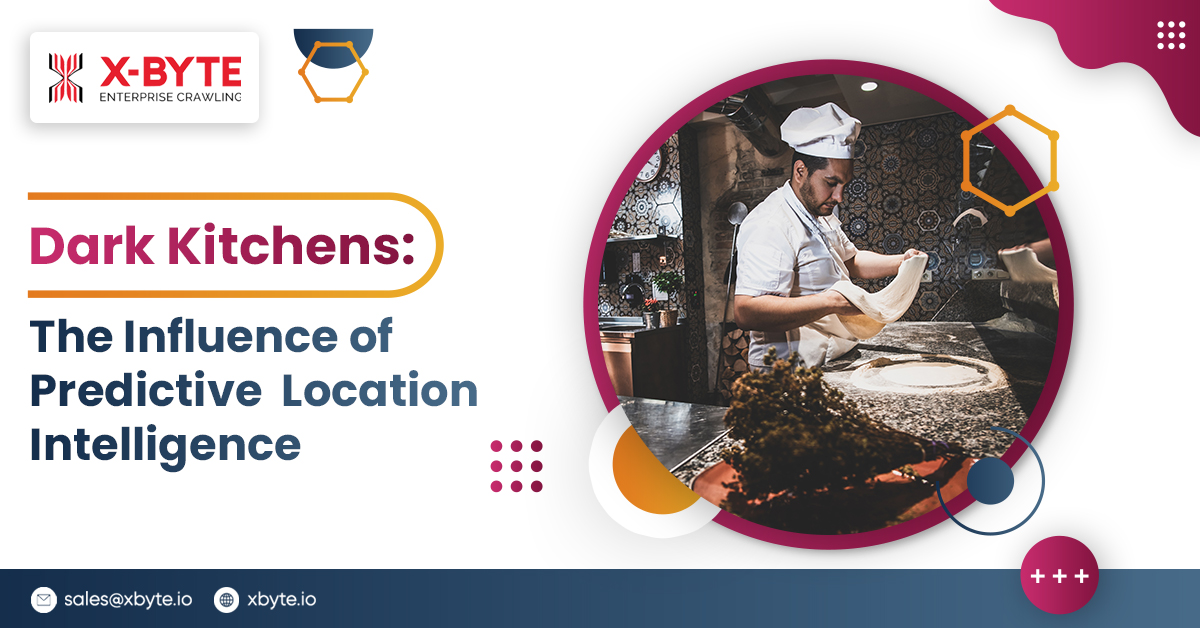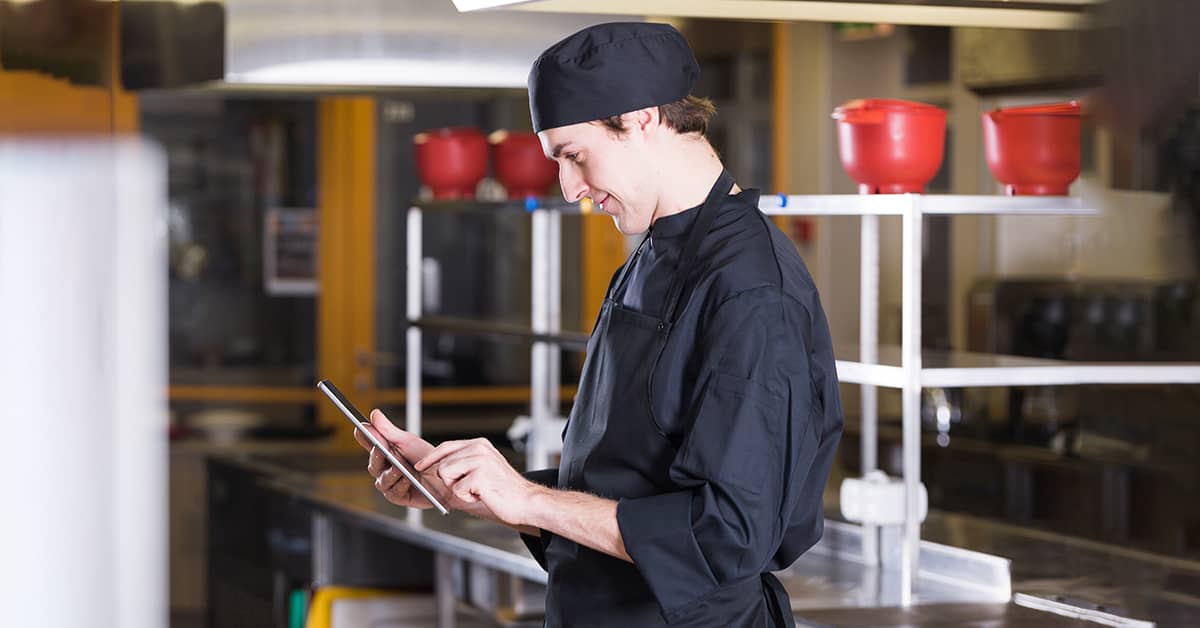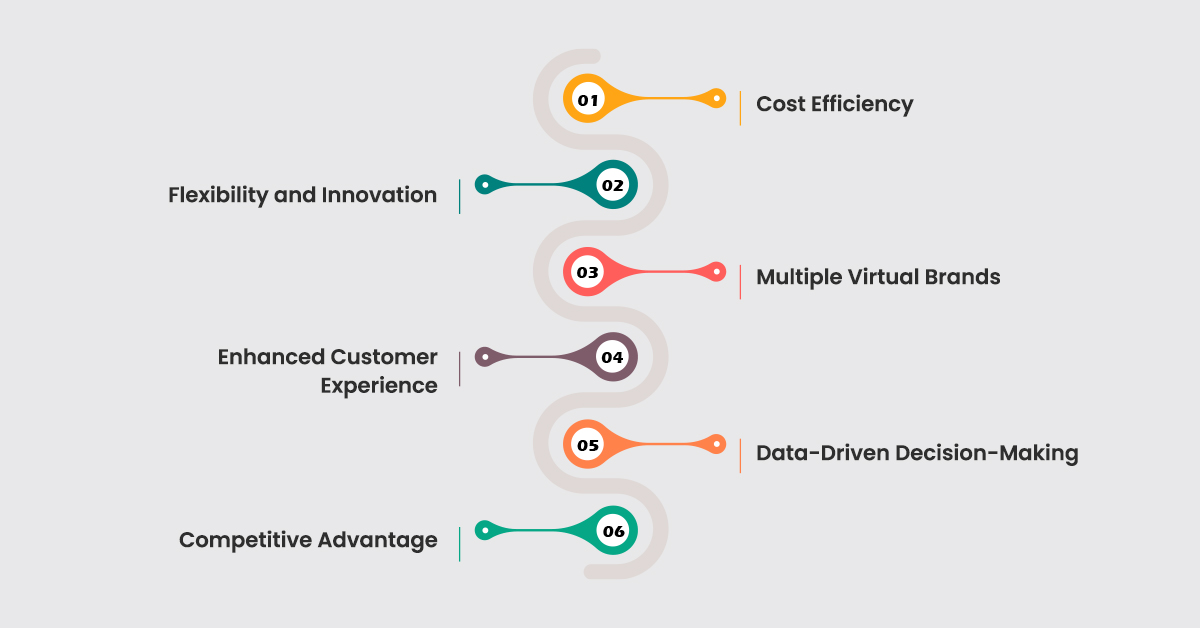
Are you ready to discover a revolutionary concept taking the restaurant industry by storm? Enter dark kitchens, the mysterious hubs of culinary innovation that reshape how we think about food delivery. But what exactly are these kitchens, and how do they operate? Well, it’s all thanks to Predictive Location Intelligence, a cutting-edge technology propelling the food service industry into uncharted territories. So, buckle up, and let’s unravel the enigma of dark kitchens together! This article will explore the world of dark kitchens and how predictive location intelligence is shaping the future of this industry to meet evolving consumer dining preferences.
What is the Dark Kitchen Concept?
Are you tired of waiting in long lines or dealing with noisy crowds to enjoy a good meal? You’re not alone! That’s why dark kitchens are becoming so popular nowadays. These professional cooking facilities bring the most delicious and mouth-watering dishes to your doorstep.
Dark kitchens are restaurants that exclusively offer meals through delivery services. You may also call it cloud kitchens, ghost kitchens, or delivery restaurants.
Unlike establishments, ghost kitchens do not have seating areas for in-house dining or walk-in customers. They focus solely on fulfilling orders received through delivery apps or online ordering systems.
Unlike traditional restaurants, dark kitchens don’t have any physical storefronts or dining spaces. That means they can focus solely on their passion for cooking and delivering exceptional meals without distractions. So, why settle for average food when you can indulge in the best of the best with dark kitchens? Instead, they focus entirely on the art and science of creating delectable dishes crafted to perfection and delivered straight to the customer’s doorstep.
Once you give an order, these specialized kitchen facilities prepare the meal accordingly. Delivery drivers then collect the charges for dispatch. Some dark kitchen setups also provide options for those who prefer to pick up their food. The absence of dine-in patrons allows dark kitchens to maximize efficiency and concentrate on what they do best: cooking exceptional meals.
Where Did the Dark Kitchen Concept Come From?
It’s been a while since ghost or dark kitchens emerged. Despite the mystery surrounding its origins, these digital-only restaurants have gained momentum lately, especially since the pandemic hit. With the new regulations and social distancing measures in place, more people are now turning to online food ordering than ever before. As a result, restaurants have had to adapt to this trend and invest in ghost kitchens to stay afloat.
The term “ghost kitchens” was already being discussed online, and there was a surge in searches for the time in early 2020. Some had already explored these dark kitchen business models in 2017, and some celebrities had even launched restaurants using this approach in 2019.
Companies like Uber Eats, JustEat, Doordash, and Deliveroo paved the way for “dark kitchens.” These platforms make it easy for food businesses to connect with customers and quickly deliver meals to their doorstep.
The emergence of dark kitchens can be attributed, in part, to the rise of Predictive Location Intelligence. This advanced technology utilizes data analytics, artificial intelligence, and geographical information systems to predict consumer behavior patterns and preferences accurately. By harnessing the power of big data, businesses operating dark kitchens can strategically position their facilities in areas where demand for specific cuisines is high, ensuring a steady influx of orders.
Cloud Kitchens and Covid-19
Ghost kitchens, a concept already gaining traction in the food delivery industry by early 2020, experienced a significant surge in growth during the pandemic. With indoor dining restrictions in place, restaurants had to embrace digital platforms, and diners increasingly turned to food delivery services.
According to a 2021 Deloitte study, the number of respondents open to ordering from dark kitchens increased by 20% from the previous year and 32% from two years prior. Despite the reopening of restaurants, digital food delivery continued to grow in popularity, with 64% of individuals preferring it in 2021, up from 53% in 2020.
The trend of dark kitchens has been growing year after year, and post-pandemic, it has attracted significant venture capital investments, with some companies raising as much as $100 million in funding. It is clear that dark kitchens are more relevant than ever, and we can expect to see continued growth in this rapidly expanding food business segment.
Dark Kitchens and Predictive Location Intelligence
Predictive location intelligence does more than find places people want to live. It also looks at things like weather, traffic trends, and demographics. By considering these factors, dark kitchen owners can improve their menus, pricing, and delivery paths. This careful method makes customers happier and boosts operational efficiency, which leads to higher profits.
Predictive Location Intelligence also helps dark kitchens respond quickly to changes in the market. Food preferences constantly change, and cultural influences and health awareness also permanently change customer standards. By keeping up with these trends, dark kitchens can ensure their marketing and menus stay fresh and appealing to the people they want to serve.
Predictive Location Analytics, Modeling and Location Intelligence
A potent combination of predictive location analytics and modeling will benefit the organization. Businesses can predict the upcoming market pattern, the behavior of the customers, new opportunities, and possible risk factors.
Predictive location analytics will allow businesses to make data-driven decisions and improve overall business strategies. Utilization of current and historical data and critical algorithms along with AI & ML helps identify the businesses’ near-time outcomes.
The robust trio of predictive location analytics, data modeling, and location intelligence helps businesses make data-driven decisions, improve business strategies, optimize resources, and improve overall business processes.
Maximize Dark Kitchens’ Profits with Location Intelligence
Predictive Location Intelligence is a complicated technology that uses past and real-time location data and predictive analytics to guess what events, trends, or behaviors people will have in the future. One can predict human behavior in certain places by analyzing customer demographics, buying habits, weather, traffic data, and social media activity.
You can run your business more effectively and make better choices with the help of data intelligence. Companies can better guess what customers want, use their resources better, and work faster with the help of advanced algorithms, machine learning, and data mining.
How Does Predictive Location Intelligence Work In Dark Kitchens?

Predictive Location Intelligence is a method of using location data to understand and predict consumer behavior. That involves analyzing the data and using algorithms to make predictions.
1. Optimized Location Selection:
Dark Kitchens can choose where to open by looking at data like population density, customer preferences, and their competitors’ locations. They can set up their kitchens where people crave certain types of food, increasing the likelihood of making more sales.
2. Demand Forecasting:
Data Intelligence can improve menus and stock levels by using algorithms that look at past data and current trends to guess what kinds of food people want to eat in certain places. By cutting down on waste, the restaurant meets customers’ needs.
3. Route Optimization:
Predictive Location Intelligence can help Dark Kitchens improve delivery methods so customers get their food quickly and easily. Traffic patterns, delivery times, and customer locations can all be looked at by Dark Kitchens to make service faster and more efficient and make customers happier.
4. Personalized Marketing:
Dark Kitchens can do a better marketing job by using location data to determine how people act. In this way, they can send promotions and ads to potential customers in particular areas, which makes it more likely that they will place an order. Dark Kitchens can reach the people it wants and make more sales with this personalized method.
5. Menu Customization:
Predictive analytics can help Dark Kitchens determine which meals are popular in different parts of the world. This helpful knowledge helps them make menus more likely to appeal to people in certain areas using more common words.
6. Operational Efficiency:
To be more efficient and quick, Dark Kitchens needs to know when people will most likely be there and what food items are prevalent in each area. That helps them better handle their staff and kitchen during busy times, which makes it possible for orders to be processed and delivered faster.
Benefits of Using Predictive Location Intelligence in Dark Kitchens for Restaurants

Dark kitchens are becoming increasingly popular among entrepreneurs who want to start or expand their restaurant business with less risk and lower costs. Construction industry experts point out that the space required for setting up a dark kitchen is up to 60% less than that of a traditional restaurant, which results in lower expenses. While this model has advantages and disadvantages, it’s worth exploring the key benefits of opening a dark kitchen.
- Cost Efficiency:
Reducing customer seating and waiting areas can be an excellent way to reduce costs. By doing so, businesses can eliminate the need for serving staff and lower their overall rent costs. Additionally, removing physical dining areas allows for greater scalability.
- Flexibility and Innovation:
This method makes trying out new brands, menus, and ideas accessible. It can quickly change to fit recent food trends, making it an excellent choice for people who want to keep up with what they want. This method also makes switching between menus or ideas easy to change without problems.
- Multiple Virtual Brands
Virtual brands can operate in a single kitchen, allowing for increased capacity to serve the growing food delivery market and expand into new geographic areas using data intelligence method. This approach also provides for simultaneously targeting various market segments, cross-promotions among the virtual brands, and shared resources.
- Enhanced Customer Experience
Businesses can make faster and more reliable deliveries when they can accurately guess the demand for their goods and plan how to get there most efficiently. Customers are happy because they get their orders on time. Doing this makes people more comfortable with the business and likelier to stick with it.
- Data-Driven Decision-Making
Real-time and historical data can help people who run dark kitchens make better business choices. That helps make menus, develop marketing plans, and grow the business.
- Competitive Advantage
When dark kitchens use predictive location intelligence, they have an edge over their competitors. They can provide quick services, customized experiences, and on-time supplies. That gets more customers and keeps them longer than rivals who don’t use these insights.
Final Thoughts
A new type of restaurant that is getting increasingly famous is the “ghost kitchen.” They mix new ideas and good food, essential because technology and consumer habits are changing. It’s wise to learn from those who have already jumped on this trend in the food business. X-byte’s Data intelligence can improve the situation of your restaurant in the digital age.
The food service business has dramatically changed since dark kitchens and Predictive Location Intelligence became linked. It shows how technology can meet customers’ needs and even guess their wants. As these improvements keep improving, it’s fun to think about all the new and exciting foods that will be available. Every meal will be a gourmet treat made in the dark in a kitchen with the smarts of tomorrow.
